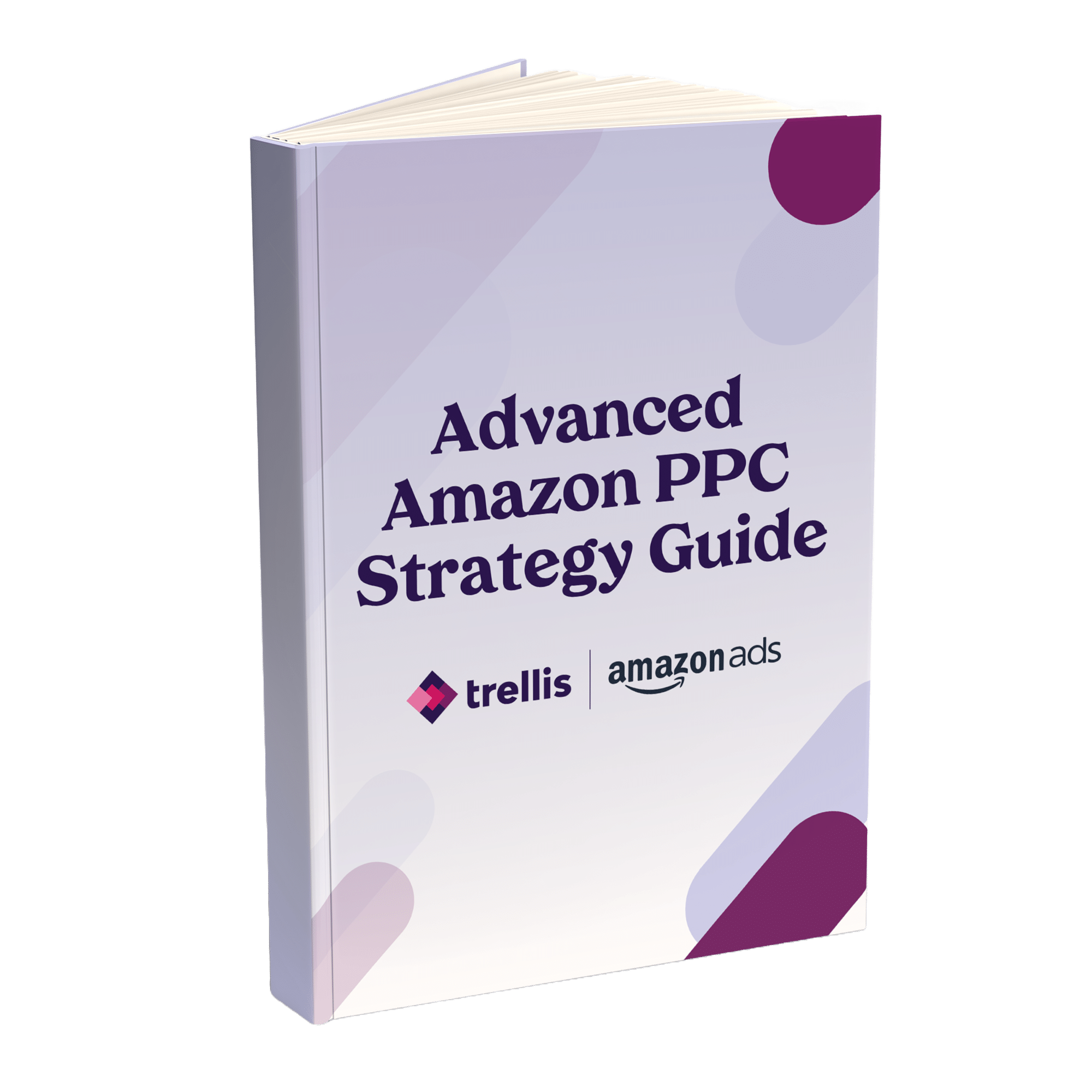For multi-brand businesses and agencies focused on driving increased return on ad spend, mastering the art of campaign rules should be high on the list of priorities.
These silent architects of success provide the structure you need to pull off complex campaigns—minus hours of manual work. The ability to set and layer rules within a consistent hierarchy is the key to optimizing campaigns for peak profitability, even when working with multiple products and brands.
How do campaign rules work and what’s the best way to set them up? Let’s dive in.
Fine-tune your attribution model and uplevel your media strategy. Learn how with our top Amazon DSP attribution tips.
What Are Campaign Rules?
Campaign rules are predefined conditions that automate elements of your advertising campaigns. They allow for precise control over targeting, bidding, scheduling, and budgeting.
For example, a fashion eCommerce brand might use targeting rules to tailor their ads based on seasonal trends or geography. They might also set up a rule to bid more for ad placements to certain audience segments or during times of the year when their audience has more disposable income (e.g. tax return season).
Even if you have campaign ops specialists working inside your campaigns daily, there’s just no way a person can keep track of all the factors that influence profitability. For that, you need automation and intentional campaign rules.
Benefits of Optimizing Your Campaign Rules
By setting up and optimizing your campaign rules, you can:
- Target the right audience. Make sure your ads reach the users most likely to convert, improving ROI.
- Increase conversion rates. Align rules with consumer behavior to turn clicks into sales.
- Optimize ad spend. Automated adjustments keep your budget in check and maximize every dollar spent.
- Improve brand positioning. Detailed rules support brand differentiation to help you stand above the competition.
- Increase efficiency. Optimized rules can free up your internal resources for strategy, innovation, and creativity.
Well-optimized campaign rules support a high-performance advertising strategy, while making sure you’ve maximized one of the essential 4Ps of eCommerce marketing: a clear place where customers can find you.
Powerful Amazon and Walmart automation meets real marketplace expertise. Get started with Trellis and watch your profits grow. 🪴

Increase Amazon Sales By 30%
Our Advanced Amazon PPC Guide is everything you need to take your Amazon profits to the next level.
5 Steps to Maximize Profitability with Campaign Rules
You’re probably already running campaigns with rules in place, but when did you last critically evaluate those rules? The following five steps are a roadmap to strategically develop and assess your campaign rules with a focus on profitability.
1. Clearly Define Your Objectives
Defining goals is often the first step in any “best practice” list—but it’s particularly important when it comes to campaign rules. Your objectives guide your decision-making throughout a process that, by nature, involves a lot of decisions.
Which objectives should you focus on? Your goals are tied closely to your overarching business strategy, so there’s no right answer here. Here are a few common campaign objectives to get the gears spinning.
- Optimize ROI. Aim to balance profitability across your brand portfolio, focusing on sustainable returns over straight growth.
- Differentiate brands. Prevent internal competition by targeting distinct customer segments based on what sets each brand apart.
- Innovate. Apply your learnings in one area throughout your brand portfolio to learn and innovate fast.
- Explore new markets. Expand your reach by identifying untapped keywords and audiences.
- Expand market share. Dominate key market segments across channels.
Outlining your goals from the start helps you make sure that any rules and automations are specifically tailored to meet them.
2. Choose the Right Rules Types
Different rules have different impacts on ROI. Campaign rules are often focused on efficiency and effectiveness—constantly “trimming the fat” to make sure budget is spent on the highest-yielding placements.
However, there might be times that spending in a certain area is beneficial, even if the immediate return is lower—for example, if you need to do a test run in a potential new market or meet a goal of increasing your Best Seller Rank. That’s why it’s so important to outline your goals before diving deeper into your rule setting.
| Rule type | Description | Example |
| Audience targeting and segmentation | Targeting users based on demographics, interests, interactions with your brand, lookalike audiences | “Target ads to women age 25-34 who have previously engaged with eco-friendly fashion brands.” |
| Bidding rules | Automatic bid adjustments based on goals | “Increase bid by 15% for high-converting keywords during peak shopping hours.” |
| Budget management | Daily budget caps, budget allocation across ad groups | “Allocate 70% of the weekly budget to top-performing ad groups and 30% to experimental groups.” |
| Scheduling and time-based | Running ads during certain times or days of week | “Show ads from 1 p.m. to 8 p.m., Thursday through Sunday” |
| Frequency capping | Limiting impressions during specific timeframe | “Limit ad impressions to a maximum of 4 times per day per user.” |
| Conversion tracking | Defining conversions and automatically adjusting campaigns based on conversion data | “Show ads to users who viewed a product page but did not complete a purchase.” |
By choosing optimization rules that directly tie to your objectives, you can make sure every action is purposeful, while keeping your rule sets tidy and focused.
3. Thoughtfully Structure Campaign Rules
Now that you’ve identified which types of rules you want to use, it’s time to dig into the weeds with structuring. Effective structure ensures that your rules behave how you intend them to.
A well-structured rule set builds a solid foundation for your campaigns, enabling automation but leaving room for manual adjustments. Here are a few common ways to structure campaign rules:
- Hierarchical: Organize rules in a tiered system where broader rules apply universally, while more specific rules address niche scenarios. This ensures consistency while allowing for targeted interventions.
- Modular: Create distinct modules for different types of rules (such as bidding, targeting, and budgeting), which can be adjusted independently without disrupting the overall campaign flow.
- Scenario-Based: Develop rule sets based on specific scenarios or objectives, such as seasonal promotions or product launches, to ensure that actions align with the intended outcomes.
Structuring rules isn’t rocket science, but it does deserve dedicated attention at the outset of your campaign. To get it right, keep rules simple and focused on key objectives.
4. Monitor Performance Metrics
If you’re running ad campaigns, you’re tracking performance metrics. However, it’s important to evaluate the effectiveness of your campaign rules through the lens of those KPIs.
For example, if your ACoS is inflated, are your rules contributing to—or failing to address—the problem? If your CTR is falling, maybe it’s your targeting rules that need an adjustment.
Choosing which metrics to focus on goes back to our first tip on defining objectives. Some common metrics for agencies include:
- Click-through rate. Boost CTR by using rules to target exactly the right segments and optimize ad placements.
- Conversion rate. Rules that automatically adjust bids and tailor messaging based on shopper behavior can ensure that ads are shown to those most likely to convert.
- Advertising cost of sales. Budget management and bidding rules can help maintain and improve ACoS by allocating spend to your best-performing ads.
- Return on ad spend. Rules can allocate budget to campaigns and ad sets that deliver the best RoAS.
- Customer lifetime value. Rules can help personalize customer interactions with your brand and nurture relationships, increasing CLV.
As you track the success of your campaigns against internal and external benchmarks, remember to include rule evaluation in the process.
5. Test, Iterate, and Improve
Continuous improvement is the cornerstone of a successful paid media campaign. Once you’ve defined your objectives, built out rules, and evaluated their performance, your campaign’s results will come down to how you learn and adapt.
Just like your overarching advertising strategy, campaign rules are not static. They should be flexible and iterative. That means:
- A/B testing to compare different rule variations against each other
- Experimenting with different rules and structures to examine the effects of each change
- Looking for and digging into patterns and anomalies
- Investing in advanced advertising analytics tools that use predictive forecasting and machine learning
- Designing cross-functional feedback loops
- Documenting and sharing what you learn from testing and experimentation
Embed this cycle of analysis and adjustment into your ad ops workflows for the very best results, no matter how your goals change.

Increase RoAS on Amazon By 100%
See how our formula improves your advertising KPIs in 8-12 weeks in almost every category.
Growing Profitability through Strategic Rules Optimization
Rules optimization can have a profound impact on profitability when margins are thin and every ounce of incremental improvement matters.
For example, a UK-based Trellis client used advertising automation and pricing rules to scale their operations, increase sales, and improve efficiency. “It would be hard to drive higher sales and margin without an automation solution that looks at the problem holistically,” the client explains.
With the help of well-structured, data-driven campaign rules, you can tweak and improve your campaigns with precision and agility.Book your free personalized demo and start optimizing your multi-brand campaigns. Or, for monthly marketing insights delivered straight to your inbox, subscribe to The Climb. 🌱




